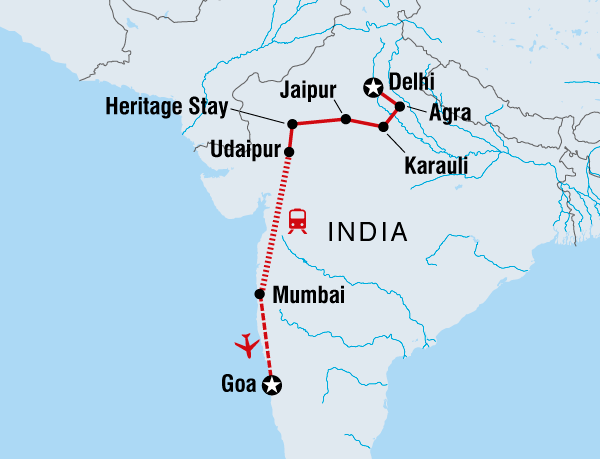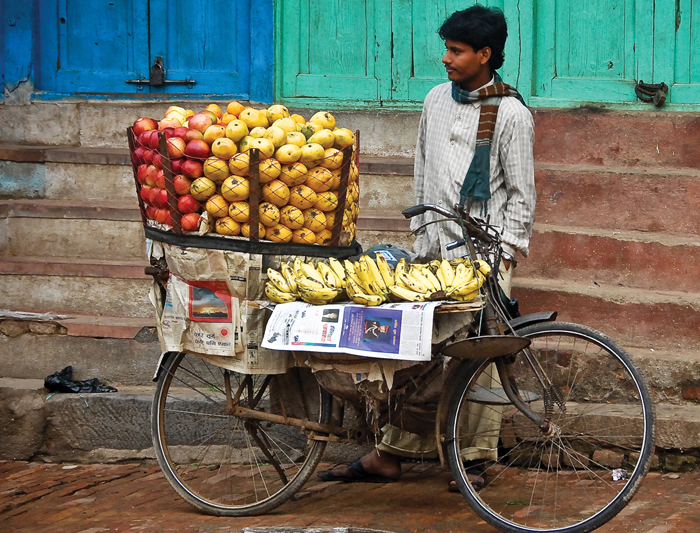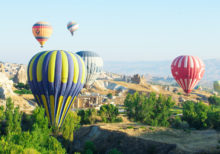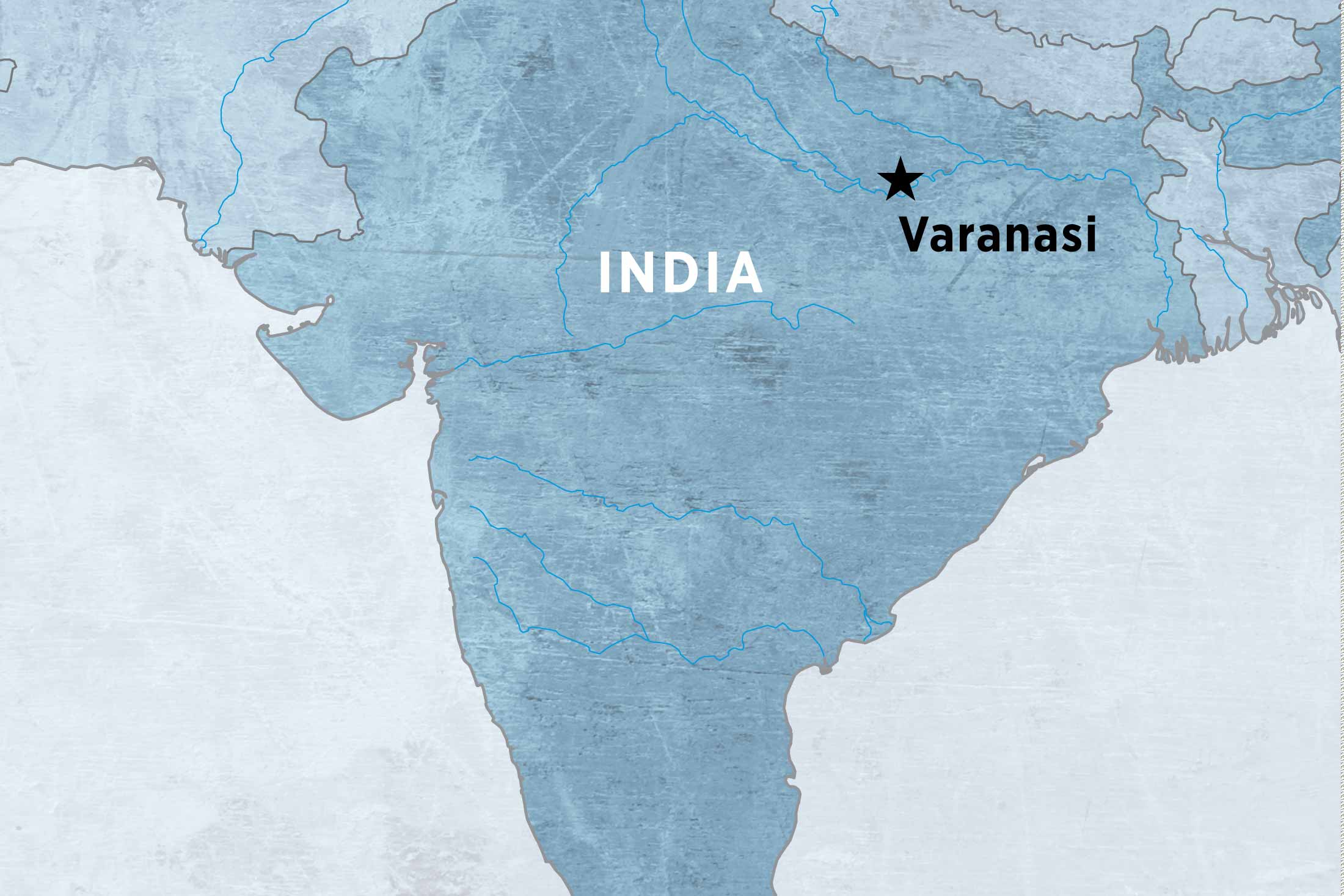| Starts | New Delhi, India |
|---|---|
| Ends | Goa, India |
| Region | India |
| Duration | 15 days |
| Tour Operator | Intrepid Travel |

Itinerary
Day 1 - Starting: Delhi & Finishing: Delhi
Namaste! Welcome to India. Delhi is an excitingly chaotic capital city – filled with historical sites from different eras, museums and galleries, shops and endless bazaars, there’s plenty to see, do, and eat. Your adventure begins with a Welcome Meeting at 6pm. Please ask reception to confirm the time and place of your meeting. We'll be collecting your insurance details and next of kin information at this meeting so please ensure you have these for your leader. If you can't arrange a flight that will arrive in time, you may wish to arrive a day early so you're able to attend. We'll be happy to book additional accommodation for you (subject to availability). If you're going to be late, please inform the hotel reception. After the welcome meeting it’s time to celebrate the beginning of a wonderful culinary adventure. Jump on the metro to the iconic Connaught Place, the hub of Delhi's financial district. Enjoy your first introduction to northern Indian cuisine with a traditional thali. After dinner, take a night stroll to take in the buzz of the city, before catching the metro back to your hotel.
Day 2 - Starting: Delhi & Finishing: Delhi
This morning venture out to Old Delhi, the historic city also known as Shahjanabad, where some of Delhi's best-known local food joints are found. Here you’ll wander through narrow alleyways and enjoy an authentic Delhi street food-style breakfast. Keep your eye out for the local chaiwala (tea maker), well known for his delicious milky tea. Next, jump on the city's modern metro system and head to Jama Masjid, Delhi's oldest mosque and one of its most impressive buildings. While Hinduism is the dominant religion in Delhi, there is also a significant Sikh population – so continue the religious theme with an insight into the food traditions of Delhi’s Sikh residents over a vegetarian lunch at a local Sikh temple. After lunch, tour Chandni Chowk, one of the oldest and busiest markets in Old Delhi. Visit the spice warehouses in the back alleys of Khari Baoli, Asia's largest wholesale spice market. See the spice selling process from truck to table, and meet a spice seller to hear him talk about how he mixes the spices for retailing. Next visit the Gali Paranthe Wali (lane of parathas), which has been in operation since the 1870s. Parathas are one of the most popular unleavened flat breads in Punjabi North Indian cuisine. Taste a number of delicious variations stuffed with fillings including potatoes, cauliflower, radish and cottage cheese. This evening, perhaps take the unique opportunity to visit a local family for a home-cooked meal – get an insight into the day-to-day life of Delhites and enjoy a delicious dinner. Jot down some secret home recipes, get involved in the preparations, or simply enjoy a chat around the kitchen table with warm and welcoming hosts.
Day 3 - Starting: Agra & Finishing: Agra
Get your first experience of Indian rail travel with an air-conditioned express train to the Mughal city of Agra (approximately 3 hours). Famed for the awe-inspiring Taj Mahal, Agra is a city with a fascinating history, rich in Mughal heritage, lush gardens and exquisite buildings and temples. Here you’ll visit the spectacular and iconic Taj Mahal. Best known as a monument to love and loss, the 17th century white marble Taj is a beautiful example of Mughal architecture, surrounded by trimmed English gardens. Built by Emperor Shah Jahan as a memorial to his wife Mumtaz, it lives up to all expectations. Agra is also home to one of the finest looking forts in India. Enter the dark red sandstone stronghold of Agra Fort – part fortress, part palace and part prison – and search through throne rooms and tiny but incredibly decorated mosques. For dinner, jump on a chaat crawl in the city thought to serve up the country’s best. Chaat are savoury snacks (like friend potatoes or samosa broken into pieces with chutney) typically served roadside from stalls or carts in India and Bangladesh – the Indian equivalent to fast food. With its origins in Uttar Pradesh, chaat have become immensely popular in the rest of India and the Indian sub-continent.
Day 4 - Starting: Karauli & Finishing: Karauli
Before leaving Agra, there’s a chance to enjoy a memorable sunrise over the Taj Mahal. Then you’ll drive to eastern Rajasthan to Karauli (approximately 5 - 5 1/2 hours), said to be founded by descendants of the Hindu deity Lord Krishna. A small town by India's standards, Karauli is not often visited by travellers and so retains a lovely rural feel alongside its impressive palaces and heritage buildings. Take a walk around the Old Quarter, interact with the friendly locals and learn about rural Indian life off the tourist trail. Explore the marketplace with its stalls selling everything from lacquered bangles and silver, to wooden utensils and other locally manufactured kitchen items. Along the way, be sure to taste some of the local sweets made of ingredients including pumpkin (petha), jaggery, peanuts (peanut brittle) and sesame seeds (gazak), to name but a few. These sweets are seasonal and their consumption is often linked with Hindu festivals. Tonight you'll stay in an atmospheric palace built as a royal residence for the ruler of Karauli in 1938. The palace also has a huge farm house and an adjoining dairy, producing much of its own vegetable and grains. Enter the kitchens and learn how to prepare the famous masala chai (spiced tea) along with other local specialities, all using ingredients sourced from the farm. The cuisine of Rajasthan is intrinsically linked with its desert landscape. Due to the scarcity of water, milk, buttermilk and curd are often used to add moisture, and leafy greens are replaced with a focus on lentils, indigenous beans and other cereals. Dominant spices include turmeric, fenugreek, mustard seeds and coriander.
Day 5 - Starting: Jaipur & Finishing: Jaipur
Today drive to the ‘Pink City’ of Jaipur (approximately 5 hours). Jaipur was designed by royalty and has delighted visitors for centuries with its pink-hued buildings, wonderful bazaars, and rainbow of bright colours dancing along hectic streets. Jaipur, like Delhi, has both old and new parts, although you’ll concentrate on the old. The streets are busy with camels and bullock-carts, monkeys climb overhead, and you’ll pass traditionally dressed Rajput men wearing colourful turbans and sporting magnificent moustaches. Stop at India's most photographed building after the Taj Mahal, the Hawa Mahal or 'Palace of the Winds’; here royal maidens once watched the streets below through the fabulous jali (lattice screens) which hid them from prying male eyes. Today snake charmers and fortune-tellers ply their trade below the same hideaway. Along the way, check out some of the city's best markets and bazaars. Visit the oldest chaiwala in the city, a favourite of the Maharaja, cool down with a delicious kulfi (ice cream dessert) and marvel at the sheer breadth of fruits, vegetables, grains, nuts, pickles, tea and spices on display. In the evening, you may wish to check out a the extravagance of a Bollywood blockbuster, with all the Hollywood-style elements of action, romance, drama and music (sometimes all rolled into one), at the spectacular Raj Mandir Cinema. Otherwise, your leader will have plenty of dinner suggestions.
Day 6 - Starting: Jaipur & Finishing: Jaipur
Travel out to the old capital of Amber and explore the hilltop fort complex known as the Amber Fort. Set in stunning surroundings on a hilltop overlooking Maota Lake, the opulent palace is the legacy of a fallen empire and a superb example of Rajput architecture packed with elaborate rooms of lavish murals, frescoed arches and delicate jali work. One of its most spectacular buildings is the Sheesh Mahal (Hall of Mirrors). With its walls completely covered with tiny mirrors, the hall becomes a dazzling fantasy with the light of a single match. For lunch try a local favourite, Kachori. Kachoris are deep fried bread stuffed with vegetables and lentils and are one of the most sought after snacks in north India. If sweets are your thing, try the Mawa Kachori, a dried fruit and mawa (milk solids) stuffed kachori, deep-fried and coated in sugar syrup. In the late afternoon you will learn the secrets of Rajasthani cuisine in a cooking class, then sit down to enjoy for dinner the feast you prepared.
Day 7 - Starting: Heritage Stay & Finishing: Heritage Stay
Today you’ll leave the city behind and visit a small village for a true insight into rural Rajasthani life. You’ll drive approzimately 6 hours to a Heritage Stay located in the Vindhyanchal Hills, stopping en route to enjoy lunch with a local family. When you arrive in Bijaipur you will stay in the 16th-century Castle Bijaipur, now a heritage hotel with attractive dome, arched windows and doorways, all within the original fortified walls. Enjoy the palace’s blend of colonial and Mughal architecture as you relax by the pool or in the gardens, pampered by the Mewar hospitality of the hotel’s owners. Spend the rest of the day relaxing in your magnificent surrounds. Perhaps take a dip in the pool or take a walk around the grounds.
Day 8 - Starting: Heritage Stay & Finishing: Heritage Stay
Today you’ll jump in a jeep and explore the surrounding farming communities. This is a major agricultural area and, depending on the season, you will pass through fields growing wheat, corn, maize, a variety of lentils, aubergine, spinach, fenugreek, okra, green chilies, tomatoes, potatoes, bottle gourd, sponge gourd, onion and garlic. Some of the spices such as turmeric, cumin are also grown here. In the late afternoon, return to your heritage stay and learn how these ingredients are used in Rajhasthani desert cooking in a cooking demonstration.
Day 9 - Starting: Udaipur & Finishing: Udaipur
Travel to the ‘City of Lakes’ Udaipur (approximately 4 hours drive) today, the beautiful city built around the shores of Lake Pichola and full of fascinating temples, ornate palaces and impressive 'havelis' (merchant homes). On arrival, take a walk around town to help get your bearings. Explore Udaipur's twisting alleys filled with traditional Rajasthani wares – silver, shoes, bags, leather goods and miniature paintings. Visit the City Palace, one of the largest royal palaces in India, and check out the unbelievable treasures within, from vivid murals to antiques and royal utensils. Tonight you have a free evening for dinner. With a strong influence of Jainism and Vaishnaism, the preferred food in Udaipur is vegetarian. Udaipur has numerous rooftop restaurants so climb some stairs, settle in and watch the sun set over a shimmering lake while dining on scrumptious local cuisine.
Day 10 - Starting: Udaipur & Finishing: Udaipur
Begin today at the local market to collect ingredients for a cooking class, where you will learn how to prepare a traditional north Indian thali meal. A thali comprises of numerous dishes, which vary depending on which region the thali is prepared in. As you’re in Udaipur, you will make a vegetarian thali. Typical dishes include rice, dahl, vegetables, roti, papad (deep-fried flat bread), curd (yoghurt), small amounts of chutney or pickle, and a sweet dish to top it off. After all that cooking, enjoy your handmade thali for lunch. Tonight you’ll board an overnight train, bound for India's capital – captivating Mumbai (approximately 16 hours). The train will depart late evening and arrive after midday the following day.
Day 11 - Starting: Mumbai & Finishing: Mumbai
Arrive in Mumbai after your overnight train. Known as Bombay until its recent name change, Mumbai is India's commercial capital. Some would say that Mumbai is also the food capital of India. This is the heart of Marathi cuisine, however you will also find huge culinary diversity that celebrates regional cuisines from across the country. Make your way into Mumbai via the remarkable Mahalaxmi Dhobi Ghat. At 140 years old it's Mumbai's oldest laundry and, with over a 1,000 troughs, it is also the worlds largest open air, human-powered one. You’ll take an orientation walk of Mumbai, taking in some of the key landmarks including the impressive World Heritage Site and historic railway station, Chhatrapati Shivaji Terminus – a striking combination of gothic and traditional Mughal architecture. For lunch, seek out a restaurant known for serving Parsi cuisine, whose community is largely concentrated in Mumbai. The Parsis are descendants of Zoroastrians who are believed to have immigrated to India from Persia in the 10th century. Drop past Mumbai’s bustling Crawford Markets and see the difference between north and south Indian cuisine. While wheat (in breads) is a northern mainstay ingredient, rice is paramount in the south – find out about the various varieties of rice available and their preferred uses. In the early evening wander down Marine Drive to Chowpatty Beach and enjoy the sunset and snack on bhel puri, followed by a street-food crawl. For anyone who still has room, you’ll also stop past a popular kebab and roll stand serving roomali rotis. This bustling stand located behind the Taj Hotel is a favourite among locals.
Day 12 - Starting: Mumbai & Finishing: Mumbai
Time for sightseeing and soaking up the atmosphere of this incredible metropolis. This city of contrasts can be hard to get your head around – poverty standing side-by-side with prolific consumerism; a city of slums that’s also the financial capital of the sub-continent and has the shopping centres, bars and restaurants to match. Wander the streets and discover some of the beautiful old colonial architecture and Art Deco buildings, treat yourself to a meal in one of the country's best restaurants, and shop until you drop in the bazaars. In the afternoon, you will be treated to a throwback to India's colonial past – traditional high tea at one of the city's most iconic hotels. With the music of a pianist in the background, sit down to your elegant table setting and enjoy the sandwiches, pasties, scones, and versions of Indian street food. This evening is free for you to seek out your own culinary interests.
Day 13 - Starting: Goa & Finishing: Goa
Take a flight from Mumbai to Goa (approximately 1 hour), arriving in the early afternoon. The rest of the day is yours to explore on your own. Tinged with a Portuguese flavour, the state of Goa is blessed with lovely beaches, rich traditions, mouth-watering cuisine, World Heritage buildings and a wealth of attractions. Visit a local fish and vegetable market and shop for the best catch. Here you will also be introduced to the spices that are typical of this region. The most important of Goan spices, the chilli, was introduced to Goa by the Portuguese. The locals say that time moves more slowly in Goa, so if nothing else it's a brilliant stop for a few days, a great chance to enjoy a bit of tranquility in an often frenetic country. Goa is also renowned for its seafood, and variations of the fish curry, laced with coconut and served with rice, has become a regional classic. This is the perfect place to give it a try.
Day 14 - Starting: Goa & Finishing: Goa
Get an insight into what makes the local food tick with a visit to a local spice farm. Goa's dense forested areas and favourable climatic conditions make it a perfect location to grow the spices liberally used in its cuisine. Go on a guided tour of a plantation that uses organic methods of cultivation, and enjoy a mouth-watering Goan buffet lunch. Lunch incudes a tasting of feni, a spirit made from either coconut or the juice of the cashew apple, and made in the state of Goa. The afternoon is free for final shopping, sightseeing, or simply relaxing on the beach. Tonight, savour a final group meal of local seafood and spicy curry and farewell this epic Real Food Adventure.
Day 15 - Starting: Goa & Finishing: Goa
Your Real Food Adventure India comes to an end today. There are no activities planned for the final day and you are able to depart the accommodation at any time.
View Dates














